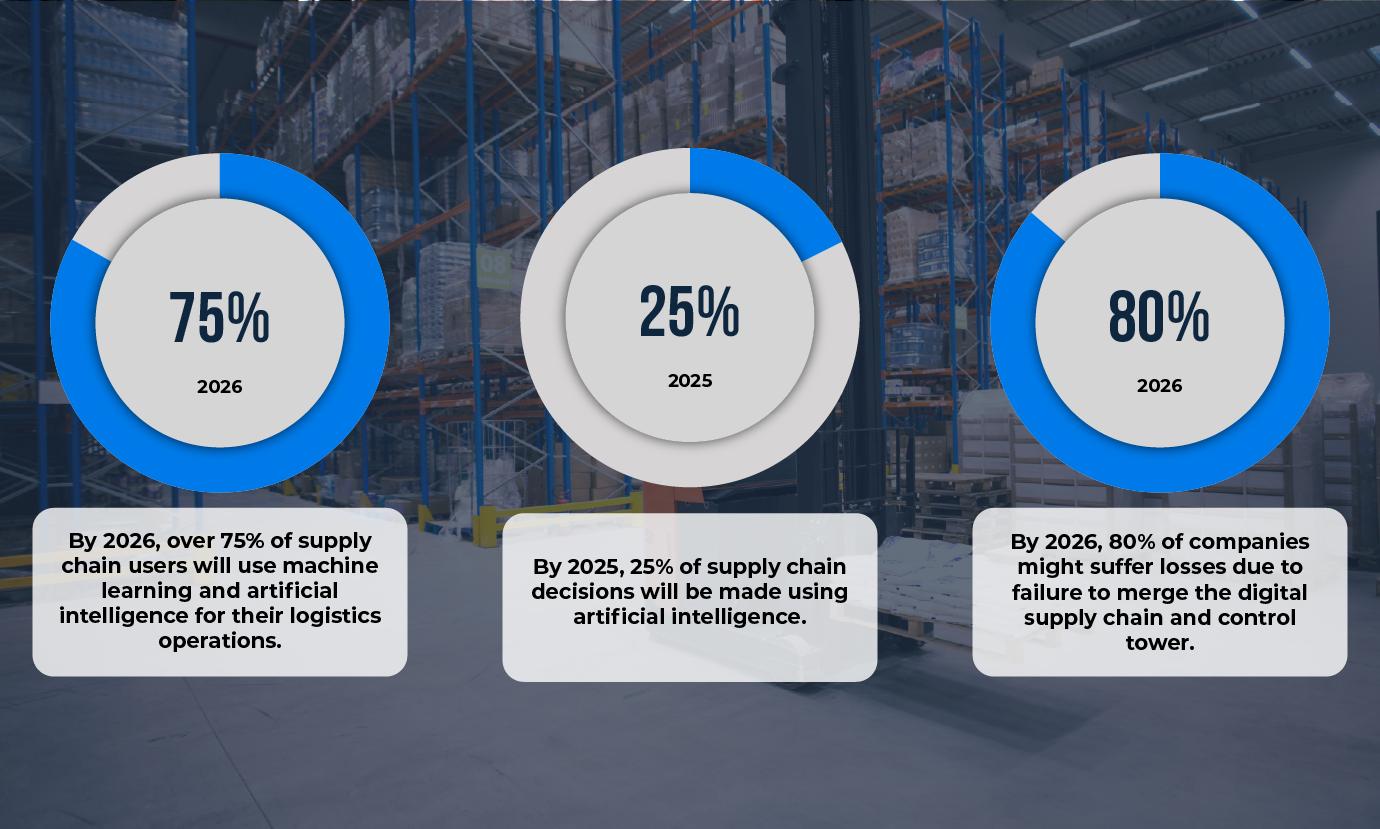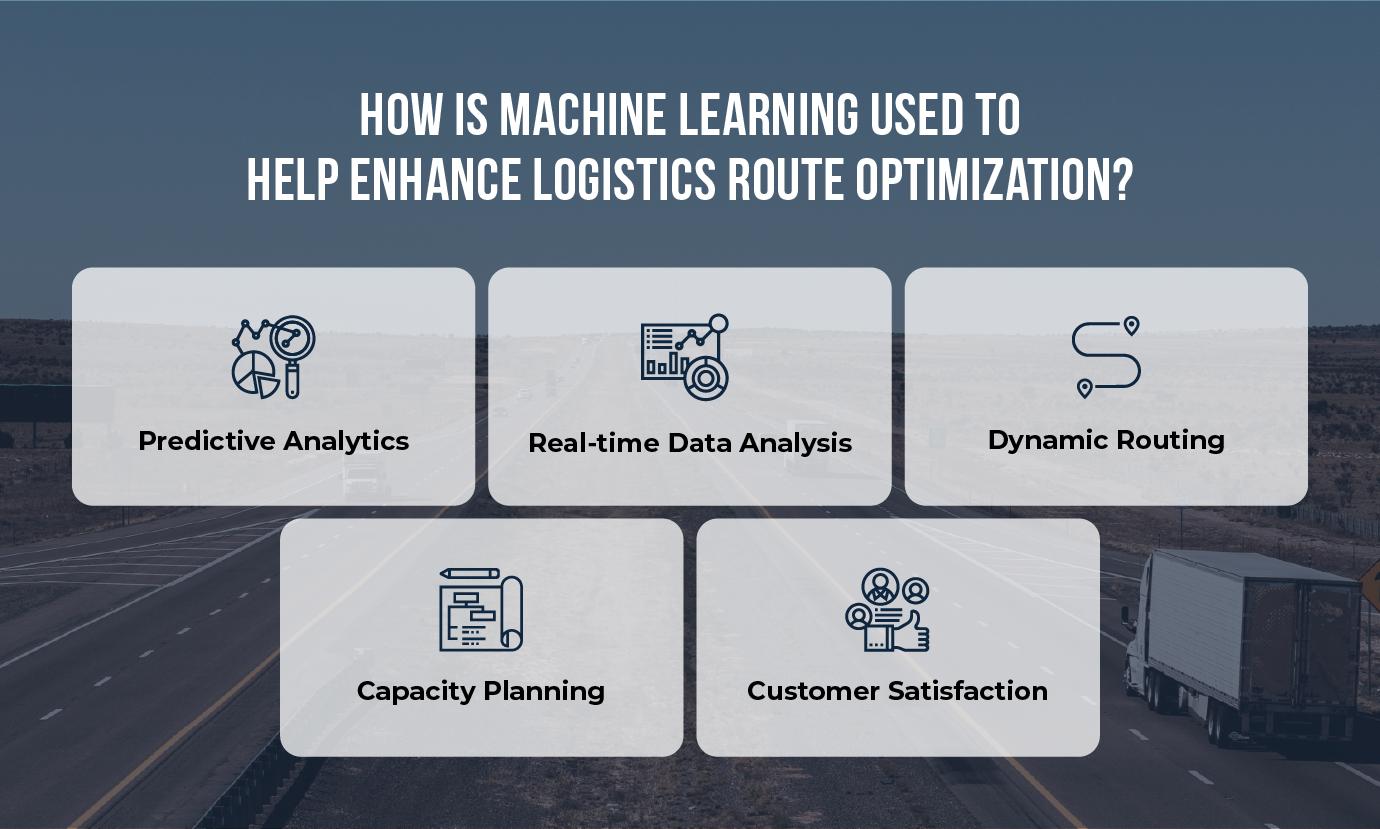
Logistics Route Optimization Using Machine Learning: Enhancing Efficiency and Profitability
Logistics is the backbone of any industry. Ensuring that products reach customers and suppliers on time is the key to customer satisfaction. However, logistics route optimization can be a daunting task, especially when dealing with numerous variables such as traffic, fuel consumption, delivery times, and weather conditions.
To address these challenges, businesses are increasingly turning to machine learning algorithms for route optimization. Logistics route optimization using machine learning can help businesses enhance their efficiency and profitability. Here are a few stats that showcase the need for businesses to adapt to the latest trends in logistics operations.
Some of the key stats that can be observed in the logistics industry for using machine learning include-
-By 2026, over 75% of supply chain users will use machine learning and artificial intelligence for their logistics operations. [1]
-By 2025, 25% of supply chain decisions will be made using artificial intelligence. [1]
-By 2026, 80% of companies might suffer losses due to failure to merge the digital supply chain and control tower. [1]

Imagine an operations manager’s problem in terms of mathematical denotations. You can have a workforce of ‘x’ numbers. They have to move through certain nodal points let that be ‘y.’ The routes should be planned efficiently so that they can reach the maximum number of customers ‘z’.
This already seems confusing and operation managers have to plan them daily which is prone to errors. This is why logistics route optimization using machine learning and artificial intelligence can help resolve routing problems.
What is Route Optimization in Logistics?
Route optimization helps find the most efficient route for the transportation of goods from one location to another. It involves considering multiple factors such as distance, delivery times, traffic, fuel consumption, and vehicle capacity. The objective of logistics route optimization is to reduce transportation costs, improve delivery efficiency, and enhance customer satisfaction.
Traditionally, logistics route optimization was done manually, with operations managers using maps and other tools to plan the best route. However, this process was time-consuming and often prone to human error. Logistics route optimization using machine learning has helped businesses become efficient and accurate, and automate logistics operations.
Can Machine Learning be Used For Logistics Route Optimization?
Machine learning is a branch of artificial intelligence that helps train computer algorithms to learn from data and make predictions or decisions. Logistics route optimization using machine learning helps businesses optimize their routes by analyzing data and identifying patterns for faster deliveries. Catch Dinesh Dixit explaining how artificial intelligence and machine learning are revolutionizing logistics and supply chains.
How is machine learning used to help enhance route optimization?
Machine learning route optimization is the process of analyzing and improving delivery routes. Here’s how our platform can help enhance your routing schedule.
Predictive Analytics:
Machine learning algorithms can analyze historical data to predict future order demands, traffic, and weather patterns. This data can help logistics operations managers make better decisions and optimize their routes efficiently and sustainably.
Real-time Data Analysis:
Logistics route optimization using machine learning can analyze real-time data like traffic, fuel consumption, and delivery times to find the best delivery routes. This can help businesses take quick action to changes in demand or unexpected events.
Dynamic Routing:
Machine learning algorithms can optimize routes dynamically, taking into account multiple variables such as delivery times, fleet and vehicle capacity, and traffic conditions. This can help businesses reduce transportation operational costs and improve delivery efficiency.

Capacity Planning:
Machine learning algorithms can analyze data on vehicle capacity and help businesses plan their logistics routes more efficiently. This can help businesses reduce the number of vehicles needed for delivery and lower their transportation costs. This is achieved by allocating more orders per trip to improve fleet efficiency.
Customer Satisfaction:
Logistics route optimization using machine learning will ensure that customers receive their products on time. This can help businesses enhance customer satisfaction and improve sales numbers (improving profits).
Delivery route optimization software is essential for businesses looking to reduce transportation costs, improve delivery efficiency, and enhance customer satisfaction. Machine learning algorithms can help businesses achieve these goals by analyzing data and optimizing routes dynamically.
LogiNext helps businesses leverage machine learning algorithms to optimize their logistics routes and increase their profitability. Our delivery management system uses machine learning and artificial intelligence to enhance vehicle route planning and optimization. Our platform can help optimize routes at any point of the day, keeping anything and everything in consideration.
– Offline mode doesn’t function properly as location update isn’t supported well
Top 3 Frequently Asked Questions
1. What is AI Route Optimization?
AI Route Optimization, in the context of artificial intelligence, involves using advanced algorithms and machine learning techniques to find the most efficient and effective routes for various purposes, such as delivery, transportation, or travel. These algorithms consider various factors like traffic conditions, distance, time, and other variables to determine the optimal path from one point to another. AI route optimization aims to minimize travel time, reduce fuel consumption, and enhance overall efficiency, making it a valuable tool in logistics, transportation, and navigation systems.
2. What are the Benefits of Route Optimization?
Route optimization offers a myriad of advantageous outcomes. Firstly, it enhances efficiency in the transportation of goods, reducing unnecessary delays and conserving valuable resources, notably fuel and time. Secondly, it promotes cost reduction by curbing expenses related to fuel consumption and vehicle maintenance. Additionally, optimized routes facilitate punctual deliveries, enhancing customer satisfaction and fostering trust. By decreasing the carbon footprint through shorter, more direct routes, it contributes to environmental sustainability. In summary, route optimization yields increased efficiency, cost savings, improved customer relations, and environmental benefits.
278 1







Pingback: LogiNext-Blog | Mastering Multi-Stop Deliveries with Route Planner Software